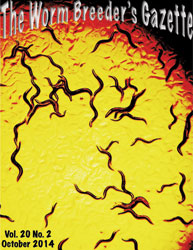unc-79 and unc-80 encode large proteins necessary for proper localization of the NCA ion channel (Humphrey et al., 2007; Jospin et al., 2007; Yeh et al., 2008). unc-79 and unc-80 also show genetic interactions with mutants in the ENaC ion channel unc-8 (Rajaram et al., 1999). Loss-of-function mutants in unc-8 were reported to suppress the fainter and anesthetic sensitivity phenotypes of unc-79 and unc-80. Additionally, the exceptional allele unc-8(n491 n1193) was reported to have a fainter phenotype on its own. Thus, it seemed possible that unc-79 and unc-80 regulate both the UNC-8 and NCA channels. To investigate this further, we reexamined interactions of unc-8 and unc-80 in more detail. We conclude that unc-8 does not suppress the fainter phenotype of unc-80.
The fainter phenotype of unc-8(n491 n1193) is in fact due to a background mutation in unc-80. First, we genetically separated the fainter phenotype of MT2612 unc-8(n491 n1193) from the unc-8 chromosome, using bli-6 dpy-20 to balance unc-8. We isolated a fainter mutant that did not carry unc-8(n491 n1193) and an unc-8(n491 n1193) mutant that did not carry the fainter phenotype. The fainter phenotype was unlinked to unc-8(n491 n1193). Second, we found that the fainter mutation in this strain failed to complement mutations in unc-80. Third, we sequenced unc-80 in this mutant (named ox374) and found a C to T change that leads to a premature stop at Q2811. The unc-80(ox374) single mutant is a fainter indistinguishable from other unc-80 mutants. The unc-8(n491 n1193) single mutant appears to be grossly wild-type, similar to other unc-8(lf) mutants. The unc-8(n491 n1193); unc-80(ox374) double mutant is a fainter, like the unc-80(ox374) single mutant. The genotypes of the unc-8 and unc-80 loci were confirmed in all single and double mutants by sequencing.
We were surprised that the unc-8(n491 n1193); unc-80(ox374) double mutant is a fainter since the unc-8(e15 lb145) deletion mutant was reported to suppress the fainter and anesthetic phenotypes of unc-79 and unc-80. One possibility to explain this discrepancy is that unc-8(n491 n1193) carries an E552K missense mutation and may not be as strong as a null. To test this, we built a double mutant between unc-8(e15 lb145) and unc-80(ox330), an early stop mutant. Similar to the unc-8(n491 n1193); unc-80(ox374) double, we observed no suppression of the fainter phenotype in an unc-8(e15 lb145); unc-80(ox330) double mutant. We are in the process of reexamining the anesthetic phenotypes of these double mutants.
References
Humphrey JA, Hamming KS, Thacker CM, Scott RL, Sedensky MM, Snutch TP, Morgan PG, Nash HA. (2007). A putative cation channel and its novel regulator: cross-species conservation of effects on general anesthesia. Curr. Biol. 17, 624-629. 
Jospin M, Watanabe S, Joshi D, Young S, Hamming K, Thacker C, Snutch TP, Jorgensen EM, Schuske K. (2007). UNC-80 and the NCA ion channels contribute to endocytosis defects in synaptojanin mutants. Curr. Biol. 17, 1595-1600. 
Rajaram S, Spangler, TL, Sedensky MM, Morgan PG. (1999). A stomatin and a degenerin interact to control anesthetic sensitivity in Caenorhabditis elegans. Genetics 153, 1673-1682. 
Yeh E, Ng S, Zhang M, Bouhours M, Wang Y, Wang M, Hung W, Aoyagi K, Melnik-Martinez K, Li M, et al. (2008). A putative cation channel, NCA-1, and a novel protein, UNC-80, transmit neuronal activity in C. elegans. PLoS Biol. 6:e55. 




